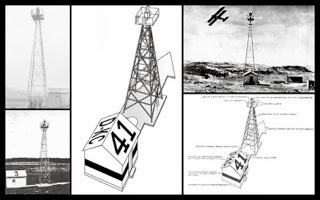Kroger Oat Bran makes really good muffins
BUT
the recipe on the back calls for 1-1/2 tablespoons of both baking powder and baking soda.
I think it's a misprint. Use 1-1/2 teaspoons of baking powder and baking soda.
1-1/2 cups oat bran
1-1/2 cups flour
1/2 cup brown sugar
1-1/2 tsp baking powder
1-1/2 tsp baking soda
1 tsp cinnamon
1/2 tsp salt
1-1/4 cups applesauce (chilled)
2 eggs (or 4 egg whites)
4 tbsp vegetable oil.
400º for 12-15 min.
Monday, September 30, 2013
Tuesday, September 17, 2013
Wednesday, September 11, 2013
Making your own lanyard for iPhone
You can make your own lanyard.
My mom has some strong-glue velcro tape (the fuzzy side is adhesive) that sticks on a surface and will NOT come off until you want it to. I always make my own lanyard by looping a piece of braid, tying a knot or two, and putting that adhesive tape it. I used to just tape it to my iPhone, which was a great solution. However, once, I dropped the iPhone exactly flush to an asphalt surface and the glass cracked. So now I attach the piece of braid to the back of a case.
If Apple would include a slight rim around the front edge of the iPhone (so the glass can't fall flat and crack) and a dimple to attach a lanyard, we could use the devices in their slimness and beauty. The glass resists scratching just fine. It's DROPPING the phone that is the issue. I think it's crazy to make such beautiful designs knowing that customers will have to totally cover them up.
Back to the adhesive-backed velcro. (I don't know where you would buy it. Ours came from the ambulance service when my sister worked there.) I can also attach the other piece to my dashboard of the car and make a place for the iPhone to hang.
Tuesday, September 10, 2013
Glider stuffing.
Step 1. Notice the wing of the __ is back in the closet.
Step 2. The Duster.
Step 3. Two or three gliders were placed in the RH back corner of the hangar in a similar fashion.
Then there was plenty of room for the 2-33 and the towplane. Bob Uhl was the master stacker.
Monday, September 09, 2013
Wednesday, September 04, 2013
Your aviation history lesson for the day!
From Neita Montague
WSPAYour US history lesson for the day! I have never heard of this before -- interesting. Remember, follow the Yellow Brick Road...................makes me want to go find one !Every so often, usually in the vast deserts of the American Southwest, a hiker or a backpacker will run across something puzzling: a large concrete arrow, as much as seventy feet in length, sitting in the middle of scrub-covered nowhere.What are these giant arrows? Some kind of surveying mark?Landing beacons for flying saucers? Earth's turn signals?No, it'sThe Transcontinental Air Mail Route.On August 20, 1920, the United States opened its first coast-to-coast airmail delivery route, just 60 years after the Pony Express closed up shop. There were no good aviation charts in those days, so pilots had to eyeball their way across the country using landmarks. This meant that flying in bad weather was difficult, and night flying was just about impossible.The Postal Service solved the problem with the world's first ground-based civilian navigation system: a series of lit beacons that would extend from New York to San Francisco. Every ten miles, pilots would pass a bright yellow concrete arrow. Each arrow would be surmounted by a 51-foot steel tower and lit by a million-candlepower rotating beacon. (A generator shed at the tail of each arrow powered the beacon.)Now mail could get from the Atlantic to the Pacific not in a matter of weeks, but in just 30 hours or so. Even the dumbest of air mail pilots, it seems, could follow a series of bright yellow arrows straight out of a Tex Avery cartoon. By 1924, just a year after Congress funded it, the line of giant concrete markers stretched from Rock Springs, Wyoming to Cleveland, Ohio. The next summer, it reached all the way to New York, and by 1929 it spanned the continent uninterrupted, the envy of postal systems worldwide.Radio and radar are, of course, infinitely less cool than a concrete Yellow Brick Road from sea to shining sea, but I think we all know how this story ends. New advances in communication and navigation technology made the big arrows obsolete, and the Commerce Department decommissioned the beacons in the 1940s. The steel towers were torn down and went to the war effort. But the hundreds of arrows remain. Their yellow paint is gone, their concrete cracks a little more with every winter frost, and no one crosses their path much, except for coyotes and tumbleweeds.But they're still out there.
=--Nick Keck
____________________________________________________________
One Weird Trick
Could add $1,000s to Your Social Security Checks! See if you Qualify…
newsmax.com
Tuesday, September 03, 2013
Subscribe to:
Comments (Atom)











